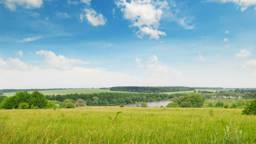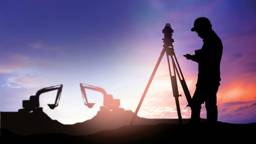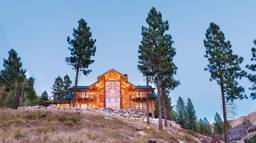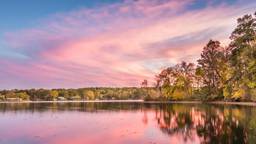Designing and building your dream log home puts you squarely on the path less traveled. Some buyers, however, want to forge their own path entirely by choosing as remote building site as they can find. Often these buyers crave privacy and uninterrupted vistas. Others are looking to take a step back from the connectivity of today’s world by building off the grid. There are even modern-day pioneers — homesteaders — who want to be entirely self-sufficient and need ample space to raise livestock and grow their own produce, in addition to building a place to live.
Before You Buy Land
Before you buy the property you have your eye on, draw up a contingency agreement between you and the seller that makes the sale dependent upon meeting certain requirements. These contingency contracts allow you time to determine if the parcel is a buildable lot. Items you may want to evaluate are:- Determining if utilities are available, including electricity, water, gas or sewage treatment.
- If the property requires a septic system, conducting a percolation (perc) test to ensure you can have a septic field.
- Locating a water source, particularly if you need to drill a well.
- Performing a soil analysis, especially to determine if excavation will be easy or if the land contains excessive bedrock that will need to be blasted (i.e., increased cost and time).
- Researching local zoning, building codes and any covenants that are required.
- Obtaining approval for a preliminary title report.
- Researching any existing or future easements (determining legal rights to the land).
- Establishing that the home will be insurable for fire or other hazards. (In the aftermath of the devastating fires in California, some insurance companies no longer provide fire protection for homes located in heavily forested locations.)
Create a Construction Strategy
The design of your new home should start with how it’s positioned on the building site — particularly if your house will be so far removed from civilization, public utilities will be difficult, if not impossible, to access. For optimum efficiency you’d be well advised to site the structure to accept the sun’s warmth in winter while avoiding solar heat gain in summer. Using a compass and drone surveillance of your site, you can position your home to decrease heating and cooling costs by as much as 50 percent.Consider a site visit from your contractor, log home producer (or both) to help you plan for optimal site orientation and construction. Will delivery vehicles, including cement trucks, be physically able to reach your building site? If not, then offsite staging and storage areas will be necessary.
In fact, depending on your location and your soil conditions, you may want to explore the variety of foundation options available to determine the one that will work best for your site. In addition to concrete masonry units and pour-in-place (the most familiar options), choices include pre-cast concrete panels, pressure-treated wood and insulated concrete forms. This is the base on which the weight of your entire home will sit, so it’s important to select the best one for your site and your structure.
Another consideration for remote locations that’s often overlooked is how far your builder, subcontractors and craftsmen will have to travel to the site each day. This factor will absolutely affect your budget. One solution is to have workers stay on the building site during construction, perhaps in RVs or other accommodations; however, this is not allowed in all jurisdictions.
Choose the Most Efficient Package
To save on labor and transportation costs, builders recommend choosing a pre-cut log home package. Likewise, builders recommend buying the most complete package your log home producer offers. This would not only include logs and timbers for walls, but also windows, doors, hardware and pre-framed interior walls and the roof system. In doing so, all the openings will be cut precisely for the materials that are included in the package, reducing or eliminating the number of onsite adjustments that would otherwise need to be made and saving time and money.If your producer offers shell construction and dry-in services on your remote building site, builders recommend taking advantage of this option. It will enable the home to be made weather tight until other trades, such as electrical, plumbing and finish carpentry, can reach your location later in your construction schedule, while protecting the majority of your investment from the elements.
So do your homework. Learn about the related costs of construction from the local home builders association. Inquire with other folks who have built in the area. Speak to the builders about preferred construction methods and costs. Information is your ally, and having all the facts will eliminate surprises and allow you to plan your log home building down to the last detail.












